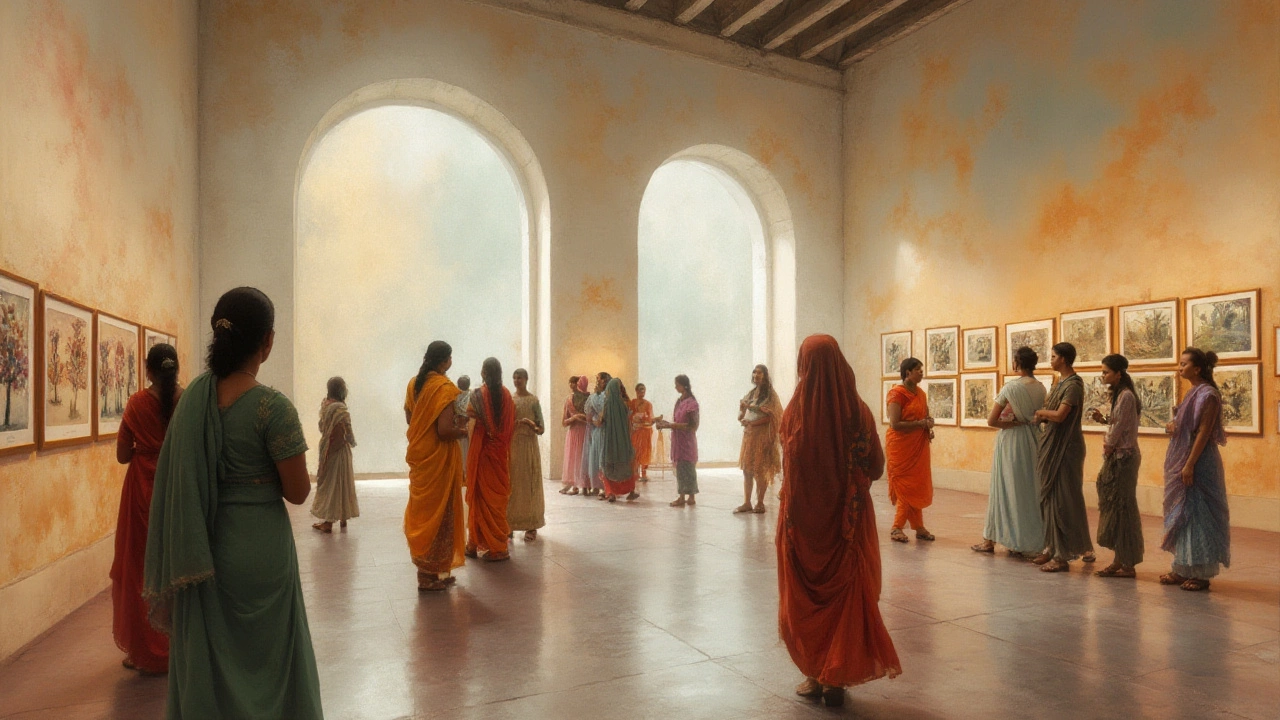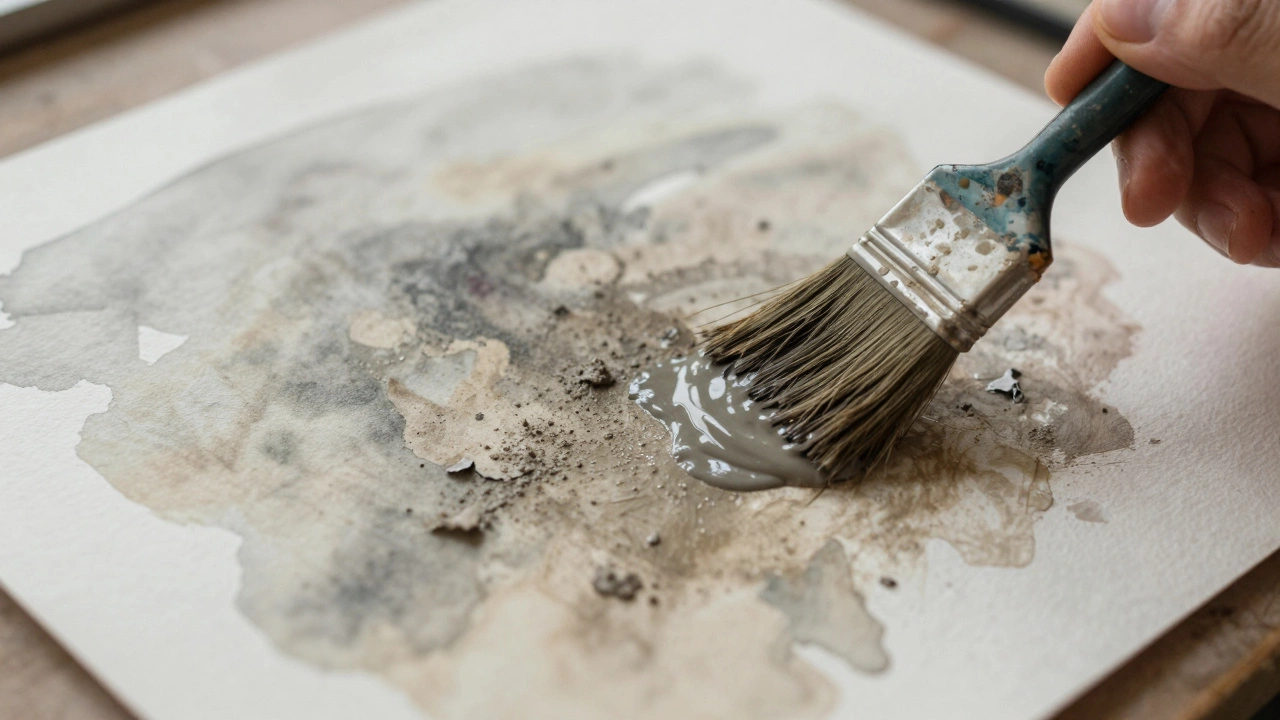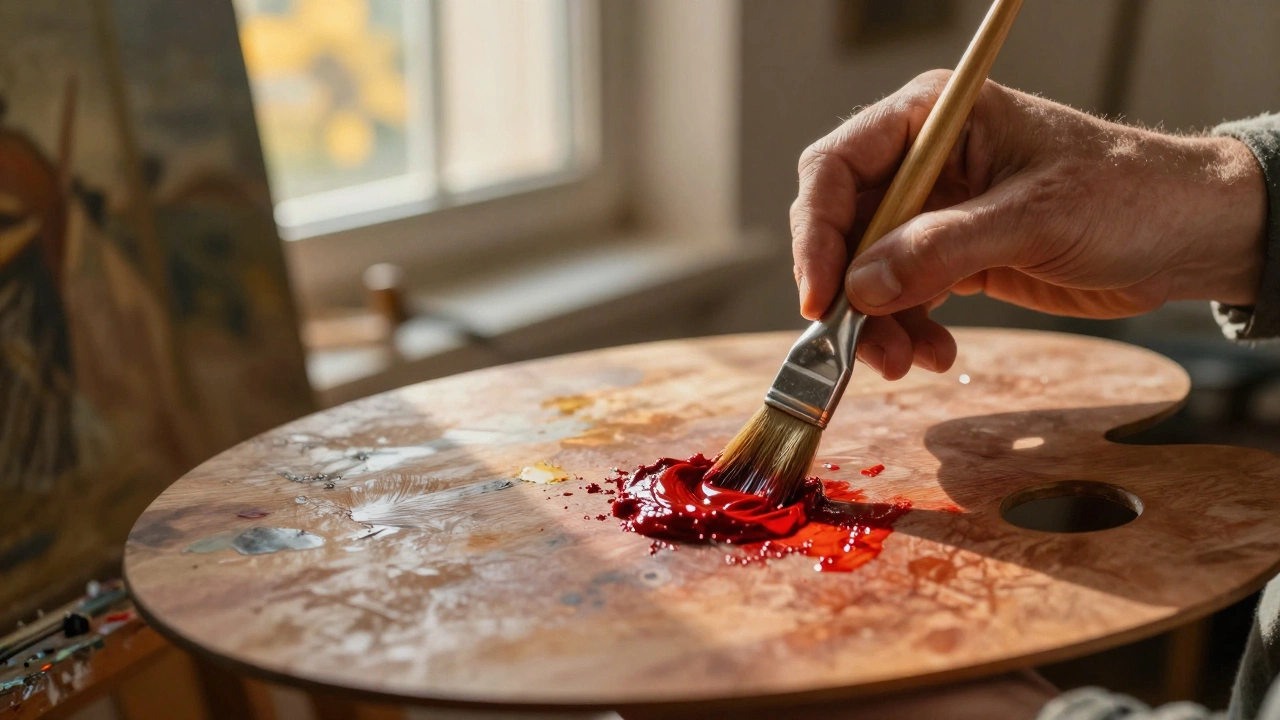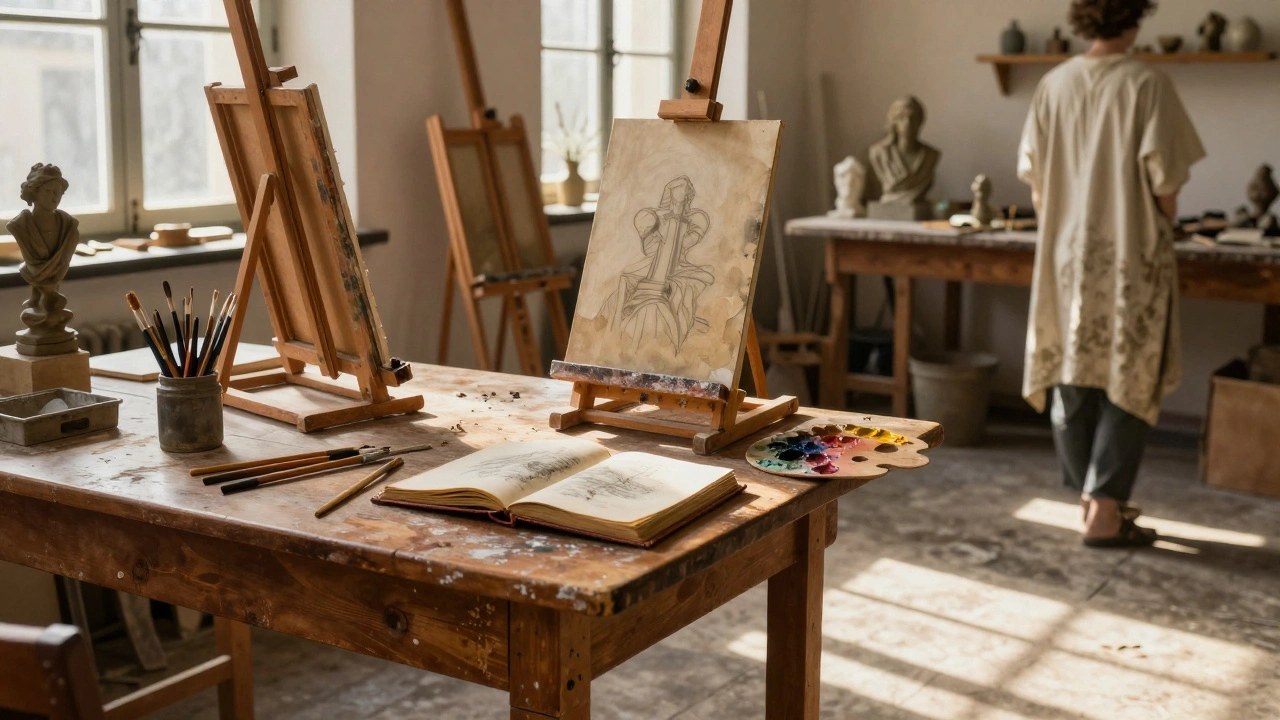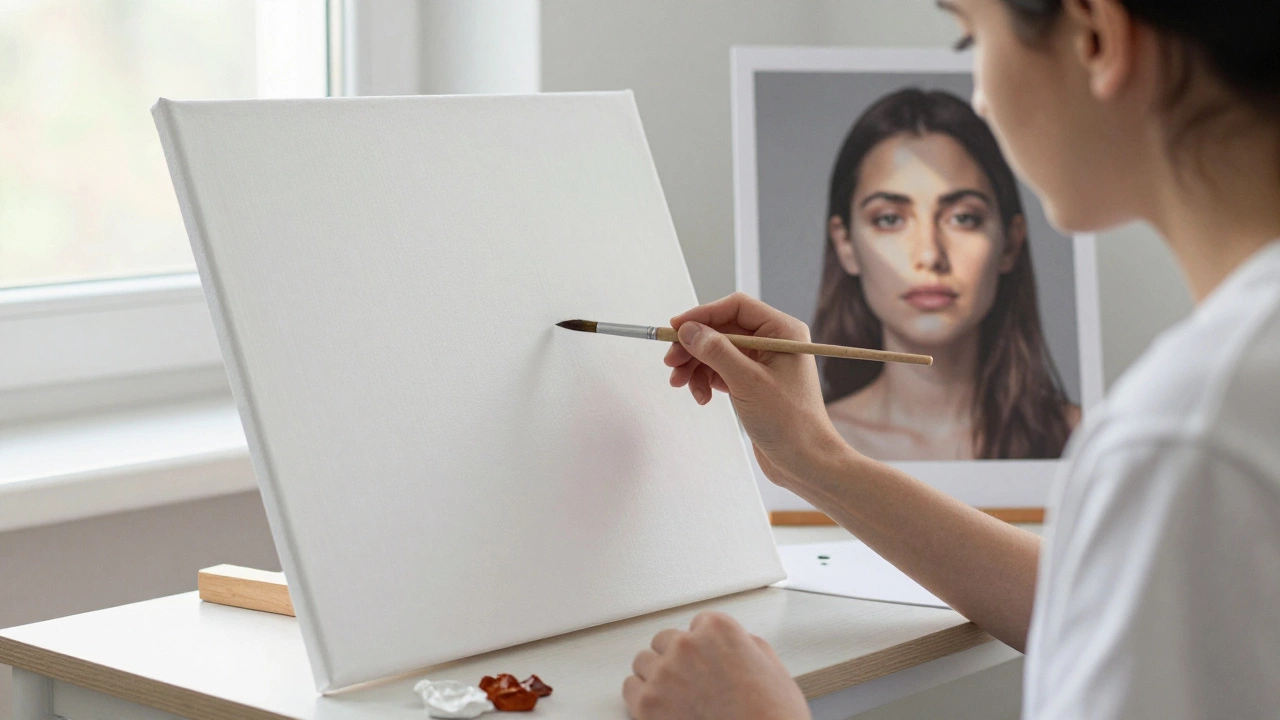Pablo Picasso is a name synonymous with groundbreaking artistry and continual reinvention. While his oil paintings receive significant attention, his watercolors stand quietly in the shadows, awaiting discovery and appreciation. These pieces, less known but equally fascinating, provide a glimpse into the versatility and experimental spirit of Picasso, who often played with styles and mediums.
In exploring his watercolor art, we come to understand the subtle differences and unique charm that distinguish this medium from his booming oil works. While they may not carry the same fame as 'Guernica' or 'Les Demoiselles d'Avignon', Picasso's watercolors present an entirely new narrative worthy of recognition. So, let's dive in and uncover the beauty of Picasso's lesser-seen artistic treasures.
- The Hidden Side of Picasso's Genius
- Watercolor Versus Oil: A Subtle Difference
- Popular Pieces: Unseen But Captivating
- Technique and Themes in Picasso's Watercolors
- Tips for Appreciating Picasso's Watercolors
The Hidden Side of Picasso's Genius
Pablo Picasso, a towering figure in the realm of art, is best known for his bold use of color and for capturing complex emotions through his oil paintings. However, a quieter facet of his brilliance is revealed through his watercolor paintings, which remain largely overlooked by both casual admirers and art historians alike. These delicate pieces offer a window into Picasso's more introspective moods, showcasing his deft hand and keen understanding of form and subtlety.
Picasso’s venture into the world of watercolors wasn't just a passing fancy. In the early 20th century, watercolors provided a fresh outlet for his creative expression. This medium allowed Picasso to experiment with light and transparency, contrasting sharply with the bold, impasto strokes of oil that he's famed for. From his watercolors, we glean a lesser-seen side of the artist—a softer, contemplative Picasso who was not just a pioneer of Cubism but also an explorer of fluidity and spontaneity. These works, characterized by their luminous hues and gentle brushwork, often explore themes of childhood nostalgia, myth, and nature.
According to John Richardson, a renowned biographer of Picasso, “These watercolors reveal the private and tender side of Picasso, a stark contrast to his more familiar, avant-garde works.”
“They are like whispers from his soul, offering glimpses into his personal world of reflections and ruminations.”This perspective is invaluable when considering how diverse Picasso’s oeuvre truly is, spanning from radical cubist experimentation to the introspective beauty of watercolors.
An interesting insight comes from the fact that Picasso's watercolors were often preliminary sketches or ideas that would later evolve into larger works in more expected mediums. This sheds light on his artistic process, which was as much about preparatory contemplation as it was about execution. Through these watercolors, one can trace the evolution of ideas and motifs that would later become synonymous with his name—his fascination with the human form, his dramatic use of distortion, and his enduring love for the colors of the Mediterranean.
Such depths in his creative journey underscore the significance of these hidden gems within his body of work. While they may not headline art exhibitions or command the astronomical prices of his paintings like ‘The Weeping Woman’, the chance to quietly ponder over a Picasso watercolor offers an intimate connection with the artist. For art enthusiasts eager to explore beyond his most famous masterpieces, these works provide a refreshing experience, illustrating the many artistic languages spoken by Picasso. They remind us that art can be both grand and subtle, and that within Picasso’s world, there is always something new to discover.
Watercolor Versus Oil: A Subtle Difference
Comparing the watercolors and oil paintings of a master like Pablo Picasso reveals fascinating insights into his creative process and artistic intentions. The vibrant and illustrious works that have gained international acclaim are often those produced with oil paints. However, Picasso's watercolor paintings present a delicate and spontaneous facet of his craft that should not be overlooked. Watercolors often necessitate speed and precision due to the quick drying times, demanding a different set of skills and artistic vision.
Watercolor, with its transparent layers, captures the light in a way that oil often cannot, creating a luminous effect that draws the viewer into a world of ethereal beauty. Oil paints, richly pigmented and able to be layered in complex textures, allowed Picasso to delve deeply into detailed and bombastic artistry. His oil works often reflect a bold and expressive energy that corresponds with his most famous periods, such as his Blue and Cubist periods. Yet, within his watercolors, Picasso found a freedom for experimentation, often working on a smaller scale that likely provided a sense of intimate creativity.
Interestingly, the history of watercolor as a medium dates back to early cave paintings and has grown into a respected art form over centuries. “Watercolor painting is some of the most moving, vital, expressive works of art ever created,” art critic Dana Gioia once noted in a
statement, aligning Picasso’s forays into this medium with legendary artists throughout history. These attributes often prompted Picasso to experiment with watercolor during travel or for sketches, resulting in works that maintain spontaneity and life.
The differences in composition and texture between watercolors and oils can be striking. Watercolors tend to display a fluidity and immediacy, often leaving viewers with a sense of participating in the fleeting moment of their creation. Conversely, oils can be worked and reworked, offering a permanence and slow evolution on the canvas. This interplay between finality and revision highlights Picasso's versatility. His love for pushing boundaries and testing new ideas shines through, whether capturing the world’s beauty or reinventing it entirely.
Understanding Picasso’s choice of medium enriches our appreciation of his artistic journey. Each painting, whether a muted watercolor landscape or an arresting oil portrait, invites us to see through the artist’s eyes. By examining them, one can grasp how Picasso's exploration in art styles continuously challenged conventions. The subtle differences between watercolors and oils reveal not just the characteristics of each medium, but the layers of thought and emotion Picasso poured into his work. This is what makes the study of his watercolors not merely an exploration of painted art, but of the human condition itself.
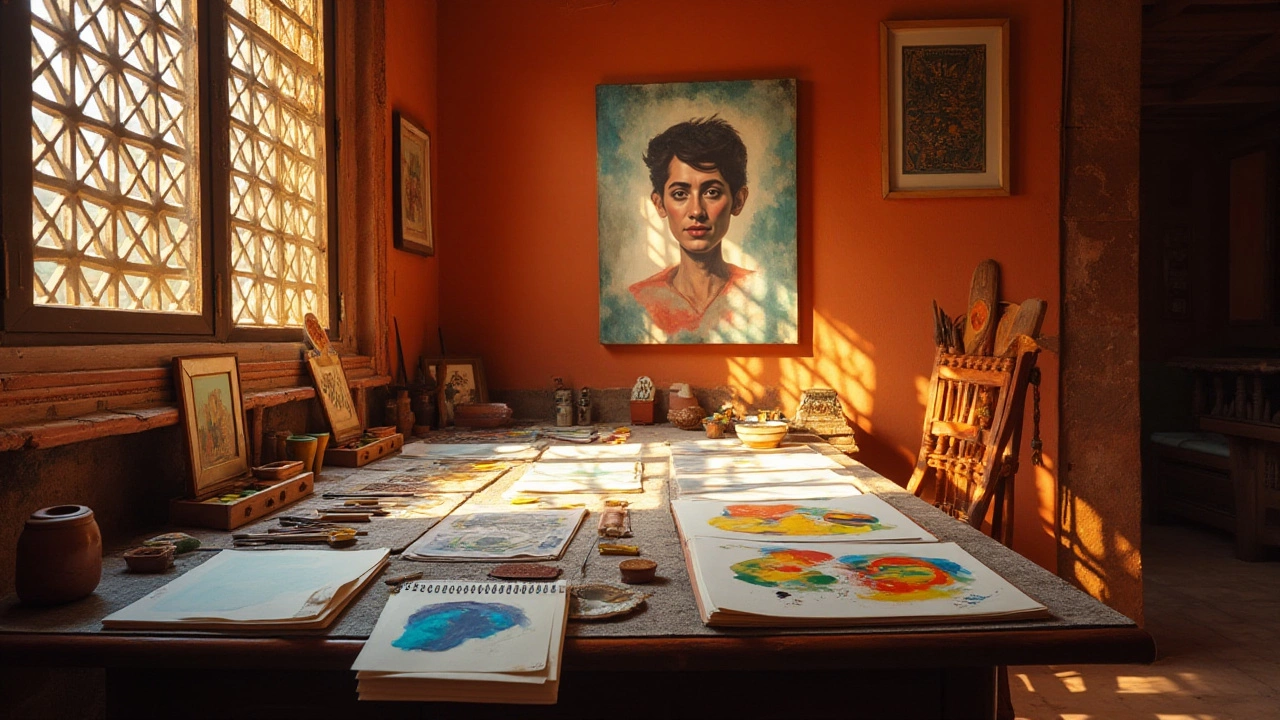
Popular Pieces: Unseen But Captivating
When contemplating Pablo Picasso, his bold and transformative creations in the realm of oil paintings often dominate the spotlight. Yet nestled within the quieter corners of his studio, another medium quietly flourished. Picasso's watercolor paintings emerged with a vibrancy and delicacy that offered a fresh perspective on his artistic identity. These works, though not always the centerpieces of exhibitions or discussions, reveal an intimate, playful side of this multifaceted genius.
Some of Picasso's most intriguing watercolors reflect his fascination with the fleeting nature of life and art. He approached his subjects with a light touch, capturing their essence through translucent layers and soft, flowing lines. Unlike the heavy and permanent textures found in his oil works, the art styles used in his watercolors evoke an impression of impermanence and spontaneity. Many historians note that this medium allowed Picasso to experiment with color theory in more subdued ways, playing with contrasts and transitions that oil might overwhelm.
One captivating piece, 'The Two Acrobats with a Dog', a stunning watercolor painted in 1905, showcases a softer side of Picasso often eclipsed by his later cubist works. The painting's gentle hues and tender expressions provide a stark contrast to the bold, angular figures in his cubist phase. These captivating pieces seemed to capture the fluidity of his gaze, reflecting an intimate observation of life’s subtle nuances.
Renowned art critic John Berger once remarked,
“Picasso's watercolors are like whispers spoken in a crowded room, easily overlooked but filled with echoes of genius.”Such works remain consistent with his lifelong dedication to exploring different mediums and subjects with unyielding curiosity. They demonstrate that beneath the revolutionary nature of his more famous pieces lies an artist who also cherished the simple, immediate beauty found in fleeting moments.
For enthusiasts and art lovers intrigued by Picasso's diverse body of work, delving into his watercolors is an enriching experience. This lesser-traveled road reveals how adeptly he navigated the nuances of light and shade, creating depth with each stroke. The whimsical nature of these paintings sheds light on Picasso's less-documented but profoundly sincere exploration of the world around him. Those who have ventured into this domain of his art often find themselves captivated by its charm, perhaps even finding echoes of their own rediscovered creativity in the process.
Technique and Themes in Picasso's Watercolors
When delving into Picasso's watercolors, we step into an artist's imaginative world where fluidity and spontaneity reign. Picasso, ever the pioneer, approached watercolors not merely as a medium but as a playground for endless experimentation. This technique requires precision yet allows freedom, an element Picasso exploited expertly. His applications ranged from soft, translucent washes to robust and vibrant hues, manifesting his emotional states and creative impulses. While oil paints often dominated his grand canvases, his watercolors mirrored the softer, more intimate musings of the genius.
Picasso, known for defying convention, utilized unorthodox methods that marked each piece with his inimitable touch. The themes in his watercolors encompass the full spectrum of human experience—from tranquil pastoral scenes to the complexities of human interactions. Often, these themes were simplified, yet they carried all the boldness of his most celebrated works. The intimacy of watercolors enabled Picasso to experiment with abstractions and forms that broke away from the linear representations. This breakaway shed light on his fascination with the multifaceted nature of human emotion and its expression.
Experimentation and Style
Every stroke in Picasso’s watercolor art displays an essence of experimentation and exploration. There's an undeniable playfulness in his depictions, whether it be in his portrayal of musicians, lovers, or moments of leisure. Picasso seamlessly wove past and present influences into each piece, drawing from traditional experiences and transforming them into avant-garde visuals. The fluid quality of watercolors offered him the ability to blur boundaries, blend realities, and present scenes that evoke a dreamlike quality.
His explorations often ventured into themes of beauty within chaos, encapsulating a realm where colors danced before settling into coherent forms. Picasso never shied away from blending different schools of art, and so his watercolors sometimes reveal the presence of Cubist elements, a style that he co-founded. It’s interesting to note that while many perceive Picasso through the prism of Cubism, his watercolors often provided a more humble, yet profound, insight into his ever-evolving stylistic pursuits.
Universal Themes Captured with Nuance
Among the multiple layers in Picasso's watercolors, there is a juxtaposition between simplicity and depth, an attempt to capture the essence of universal themes. These artworks often narrate stories of love, struggle, identity, and existence, universally resonant yet deeply personal. For instance, his series of bathers captures the fluidity of motion and life, imbuing each figure with a sense of movement and intrigue.
In his rendition of these familiar themes, Picasso intertwined humor, wit, and profound insights, inviting observers to delve beneath the surface. Such thematic interests were often bound by Picasso's insatiable curiosity about the human condition, urging viewers to reassess their understanding of reality. His nuanced approach, executed with a masterful hand, ensured that these themes were not didactic but rather open to interpretation.
"Art is a lie that makes us realize truth." — Pablo Picasso himself once remarked, highlighting the underlying philosophy that guided much of his creative work, including his watercolors.
Picasso’s watercolors thus encapsulate a fascinating universe, where techniques blur and themes resonate, leaving behind echoes of emotions that are as much his own as they are ours. In exploring these captivating works, one gains an appreciation of the quieter yet equally powerful side of Picasso’s vast artistic gamut.

Tips for Appreciating Picasso's Watercolors
Appreciating Picasso's watercolor paintings requires a slightly different mindset than viewing his more famous oil works. These serene and often overlooked creations demand a quieter, more introspective gaze that allows viewers to connect with the artist's subtler intentions. To begin with, understand that Picasso's watercolors offer a dynamic blend of immediacy and delicacy, which is characteristic of this fluid medium. Unlike the more deliberate process of oils, watercolors allow for spontaneity, capturing a moment in swift brush strokes. This aspect adds an air of intimacy as if Picasso's thoughts are laid bare with each translucent layer. Viewing his watercolors becomes a personal dialogue with the artist, where each impressionistic gesture invites interpretation and reflection.
Another suggestion is to study the themes and motifs that Picasso revisited across different mediums. Often, the subjects he explored in watercolor were preludes or companions to his larger works in oils and ceramics. By recognizing parallels between these pieces, you gain insight into Picasso's evolving thought processes and creative methods. One must appreciate how he skilfully balances composition even in seemingly simple scenes, often infusing them with symbolic depth. Embrace the unique storytelling within each artwork by considering the historical context and personal circumstances that might have influenced Picasso at that time. For instance, the whimsical nature of some pieces harks back to a period where Picasso found solace amid the turmoils of war.
Take a moment to study the strokes of color and how they interact on paper. Picasso's ingenious use of negative space breathes life into the subject, inviting viewers to ponder the stories painted between the lines. Some art experts suggest that focusing on a smaller section of the painting before taking in the complete picture can reveal unexpected details. Furthermore, you may encounter emotional subtleties and subtler expressions that create a unique viewing experience. Allow your imagination to weave narratives from figures and shapes that may initially seem abstract or nebulous. Such a practice helps to cultivate a profound appreciation for the range and depth found within these paintings.
A quote from art critic John Berger sums it up:
"Seeing something as it is involves a process of continual re-imagining."Consider how this process could enhance your engagement with Picasso's watercolors. Be open to the stories that these pieces share, remembering that their simplicity often belies complex human emotions.
Finally, consider incorporating a few lifestyle elements that might augment your art appreciation journey. Create an environment conducive to contemplation when enjoying these pieces. A quiet space free from distractions, gentle background music, or even pairing your experience with hues found in reality, like a sunset or a garden, can greatly deepen your connection. Such enhancements can transport you into the realm of Picasso's whimsically spirited world, where each brushstroke serves as a poetic nod to his visionary genius.
